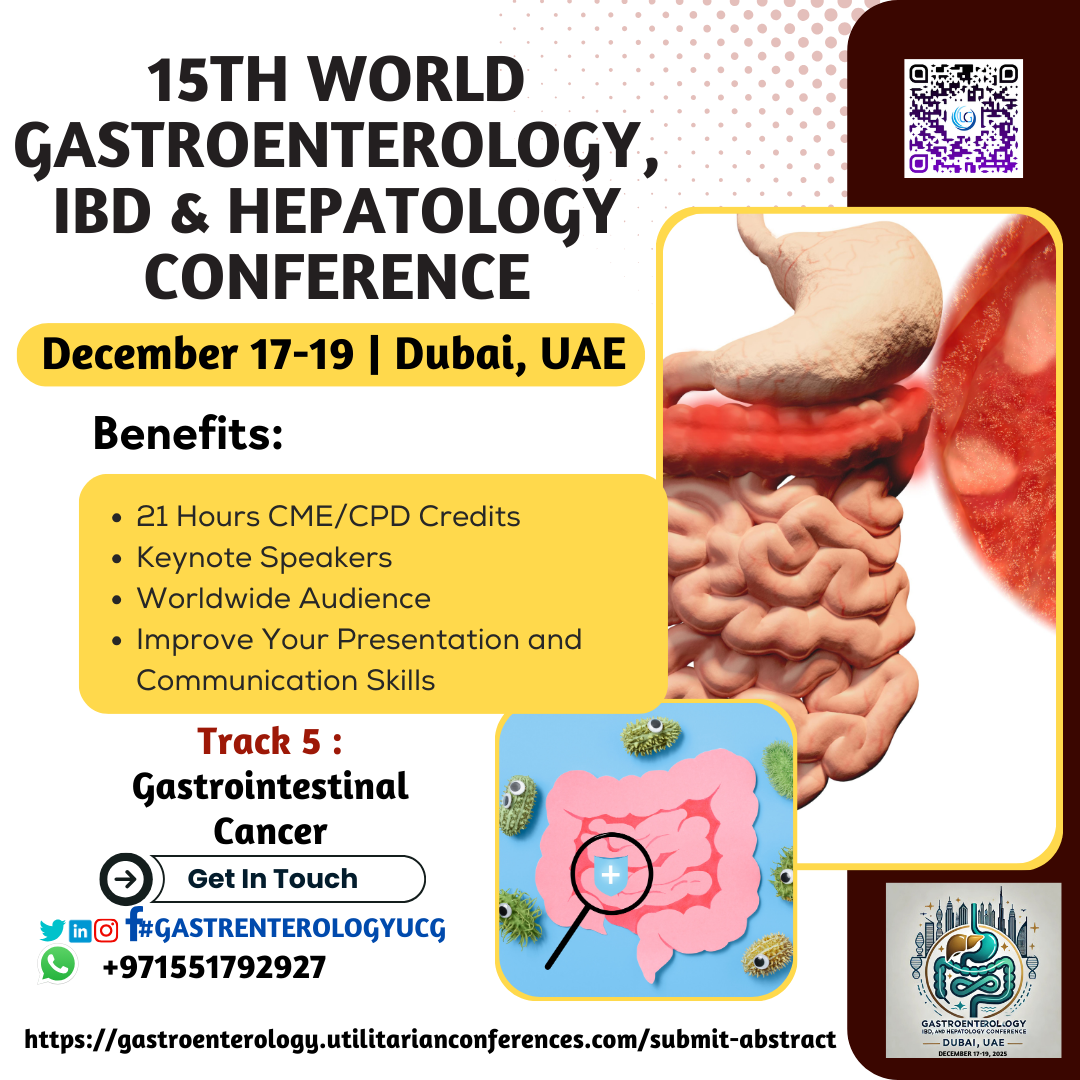



Gastroenterology is the study of the normal function and diseases of the...

What is Hepatology?
Hepatology is a specialized branch of medicine focused...

Gastrointestinal cancer refers to a group of cancers that affect the digestive system. This includes cancers of the stomach, liver, pancreas, gallbladder, esophagus, small intestine, large intestine (colon), rectum, and anus. These cancers can vary significantly in terms of symptoms, diagnosis, treatment, and prognosis depending on the specific location and stage of the cancer.
Treatment options available?
Treatment options for gastrointestinal (GI) cancer vary depending on the type, location, stage of the cancer, and the overall health of the patient. Here's an overview of the common treatments:
1. Surgery
Curative Surgery: Removes the cancerous tumor completely. It's the
primary treatment for many GI cancers, especially when detected early.
Examples: Partial or total gastrectomy (stomach), colectomy
(colon), pancreatectomy (pancreas), esophagectomy (esophagus).
Palliative Surgery: Performed to relieve symptoms or complications like obstruction, even when cancer cannot be completely removed.
2. Chemotherapy
Uses drugs to kill cancer cells or stop them from growing. Chemotherapy can be used before surgery (neoadjuvant) to shrink tumors or after surgery (adjuvant) to eliminate remaining cancer cells.
Often used in combination with other treatments, especially in cancers like pancreatic or colorectal cancer.
3. Radiation Therapy
High-energy radiation is used to target and destroy cancer cells. It can be used alone or in combination with surgery and/or chemotherapy.
External beam radiation is the most common form, though internal radiation (brachytherapy) is sometimes used.
4. Targeted Therapy
Uses drugs or other substances to specifically target cancer cells without harming normal cells. These therapies target specific proteins or genes involved in cancer growth.
Examples: HER2 inhibitors (used in stomach and esophageal cancers), VEGF inhibitors (used in colorectal cancer).
5. Immunotherapy
Boosts the body's immune system to fight cancer. It's particularly effective in cancers with high levels of certain markers, like microsatellite instability (MSI) in colorectal cancer.
Examples: Immune checkpoint inhibitors (e.g., pembrolizumab, nivolumab)
6. Endoscopic Treatments
Minimally invasive procedures performed using an endoscope to remove or treat small tumors or early-stage cancers within the GI tract.
Examples: Endoscopic mucosal resection (EMR), endoscopic submucosal dissection (ESD)
7. Ablation Therapy
Techniques like radiofrequency ablation (RFA) or microwave
ablation use heat to destroy cancer cells. Often used for liver or pancreatic
cancers.
8. Palliative Care
Focuses on improving quality of life by managing symptoms
and reducing pain for patients with advanced cancer. This can include pain
management, nutritional support, and other supportive therapies.
9. Clinical Trials
Participation in clinical trials may offer access to new and
emerging treatments not yet widely available. Clinical trials are a key part of
cancer research and may provide options when standard treatments are not
effective.
10. Nutritional Support and Rehabilitation
Essential for patients undergoing treatment for GI cancers. Proper nutrition can help manage treatment side effects and improve overall well-being. Rehabilitation may also involve physical therapy, psychological support, and other services to aid recovery.
Side effects?
1. Surgery
Post-Surgical Pain: Pain at the site of the incision or
where organs were removed.
Infection: Risk of infection at the surgical site.
Bleeding: Potential for significant blood loss during or
after surgery.
Digestive Issues: Changes in bowel habits, difficulty
digesting food, or nutritional deficiencies depending on the extent of the
surgery.
Fatigue: General tiredness due to the body’s recovery
process.
Scar Tissue: Formation of scar tissue which may cause complications like bowel obstruction.
2. Chemotherapy
Nausea and Vomiting: Common but
often manageable with anti-nausea medications.
Fatigue: Persistent tiredness that
can impact daily activities.
Loss of Appetite: Reduced desire to
eat, which can lead to weight loss.
Hair Loss: Often temporary and
related to the drugs used.
Mouth Sores: Painful sores in the
mouth or throat.
Diarrhea or Constipation: Digestive
changes due to the effects on the GI tract.
Increased Risk of Infection: Due to
a decrease in white blood cells (neutropenia).
Skin Changes: Rashes or sensitivity.
3. Radiation Therapy
Skin Irritation: Redness, dryness, or blistering in the area being
treated.
Fatigue: Common as treatment progresses.
Nausea and Vomiting: Especially if the stomach or abdomen is
treated.
Diarrhea: If the pelvic or abdominal area is irradiated.
Difficulty Swallowing: If the chest or throat area is treated.
Hair Loss: Limited to the area being irradiated.
4. Targeted Therapy
Diarrhea: Common with some targeted drugs.
Skin Rash: May occur with certain drugs.
Fatigue: General tiredness.
Liver Function Changes: Elevated liver enzymes may require
monitoring.
Blood Pressure Changes: Some drugs can affect blood pressure.
5. Immunotherapy
Flu-Like Symptoms: Fever, chills, and body aches.
Skin Rash: May appear as a result of the body’s immune response.
Digestive Issues: Diarrhea or colitis.
Endocrine Problems: Effects on hormone-producing glands,
potentially causing issues like thyroiditis or adrenalitis.
Fatigue: General tiredness or weakness.
6. Endoscopic Treatments
Discomfort: Mild discomfort or cramping after the procedure.
Bleeding: Minor bleeding at the treatment site.
Infection: Risk of infection at the
site where the endoscope was inserted.
7. Ablation Therapy
Pain: Localized pain at the site of treatment.
Fever: Temporary fever can occur as a reaction to the treatment.
Skin Changes: If the treatment is near the surface, there may be
changes in skin texture.
8. Palliative Care
Side Effects Depend on Specific Interventions: Pain management and
other supportive measures aim to alleviate side effects rather than cause them.
However, certain medications or interventions might have side effects that need
to be managed.
9. Nutritional Support and Rehabilitation
Digestive Issues: May arise as part of adjusting to new eating
habits or managing side effects.
Fatigue: Ongoing fatigue might be addressed through nutritional
support and physical rehabilitation.
Managing side effects often involves a combination of medication, dietary adjustments, and supportive care. It’s essential for patients to communicate openly with their healthcare team about any side effects they experience so that appropriate measures can be taken to alleviate discomfort and maintain quality of life.
SUB TRACK:
Abdominal discomfort, Unintentional weight loss, Vomiting and nausea, Acid reflux, Diarrhea, constipation, Fecal incontinence, Fatigue, Loss of appetite, Irritable Bowel Syndrome, Hemorrhoids, Diverticulitis, Hepatitis A, Hepatitis B, Liver Disease, Colonoscopy, Esophagogastroduodenoscopy, Liver transplant service, Complex endoscopy, Nutrition, Hepatobiliary Clinic, Pancreas Clinic, Esophageal Clinic, Colorectal Neoplasia, Motility, Miscellaneous GI testing, Inflammatory Bowel Disease, General GI, Cholera, Enteric duplication cyst, Giardiasis, Pancreatitis, Peptic ulcer disease, Yellow fever, Hepatitis Virus, Hepatitis treatment